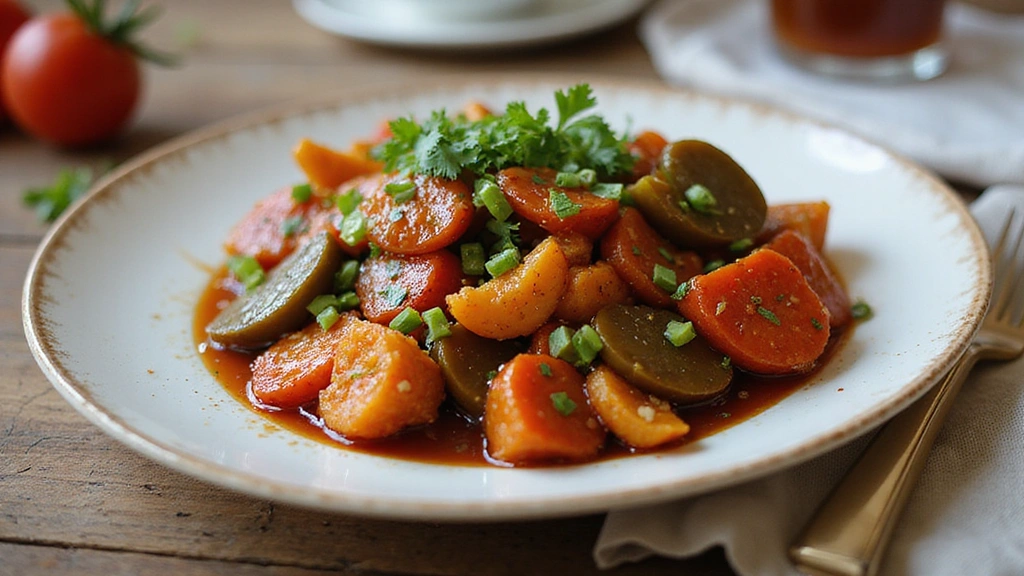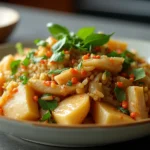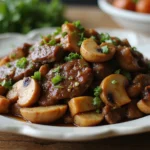Chinese stir fry sauce is a culinary gem that embodies the vibrant flavors of Chinese cuisine.
The rich blend of soy sauce, sesame oil, and fresh aromatics creates a savory and umami-packed base that elevates any stir-fried dish.
I first learned to make this sauce during a cooking class in Beijing, where the instructor emphasized the importance of balance and freshness in every ingredient.
Whether you’re whipping up a quick weeknight dinner or impressing guests, mastering a few essential stir fry sauce recipes will greatly enhance your home cooking.
The History and Cultural Significance
• Chinese stir fry sauce recipes essential for home cooking trace their origins to the southern regions of China, particularly Guangdong, where stir frying became a popular cooking method in the 18th century.
• The dish evolved over decades as Chinese immigrants adapted local ingredients in various countries, eventually leading to the diverse varieties we enjoy today.
• In Chinese culture, stir fry dishes are often served during family gatherings and celebrations, symbolizing unity and the importance of sharing food.
• While many variations exist across different regions, the authentic version maintains a balance of saltiness, sweetness, and umami that sets it apart from imitations.
Recipe Overview
Nutritional Information (per serving)
Ingredients
Essential Equipment Guide
Wok: A traditional wok is crucial for achieving the high heat needed for stir frying, allowing for quick cooking and even distribution of heat. If a wok isn’t available, a large skillet can serve as an alternative, but look for one with a heavy bottom for better heat retention.
High-Quality Knife: A sharp, high-quality chef’s knife is essential for quickly and evenly cutting vegetables and proteins. Invest in a good knife to ensure safety and efficiency in your prep work.
Measuring Spoons: Accurate measurements are key in achieving the desired flavor balance. Using a set of measuring spoons allows for precision, especially when adding potent ingredients like soy sauce or sesame oil.
Preparation Methods
Chopping Vegetables: Properly chopping vegetables is essential for even cooking. Aim for uniform sizes to ensure they cook at the same rate. Use a sharp knife for clean cuts, which will enhance the final presentation and texture.
Mixing the Sauce: Combine all sauce ingredients in a bowl before cooking. This ensures that the flavors meld together and allows for easy incorporation during the stir-fry. Whisk until smooth to avoid clumps of cornstarch.
Stir Frying: Stir frying requires high heat and constant movement. Use a spatula or wooden spoon to continuously stir the ingredients for even cooking. This technique prevents burning while ensuring a delicious sear on the vegetables.
Step 1: Prepare Ingredients
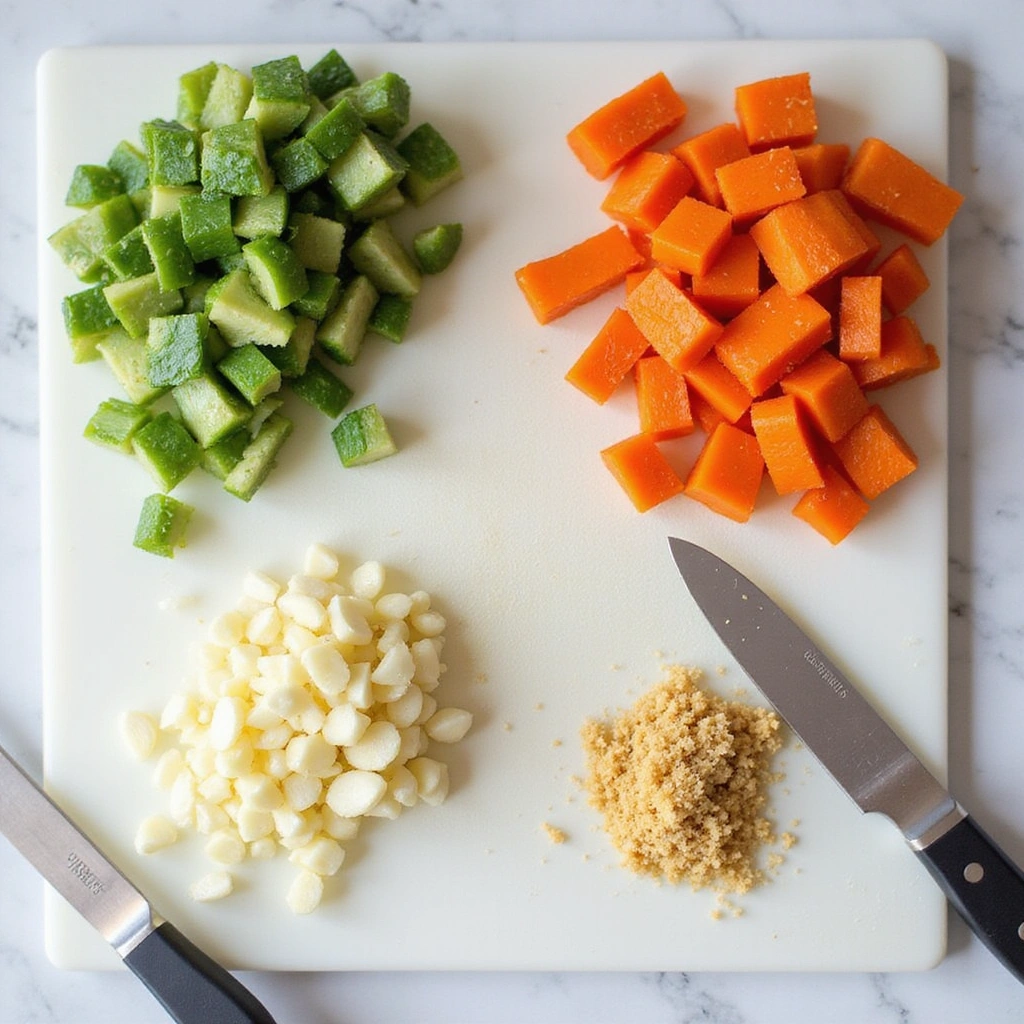
Begin by gathering all your ingredients on a clean countertop.
Wash and chop the vegetables into bite-sized pieces.
Make sure the garlic and ginger are minced or grated for maximum flavor release.
This prep work is crucial for a smooth cooking process since stir frying is quick.
Step 2: Mix the Sauce
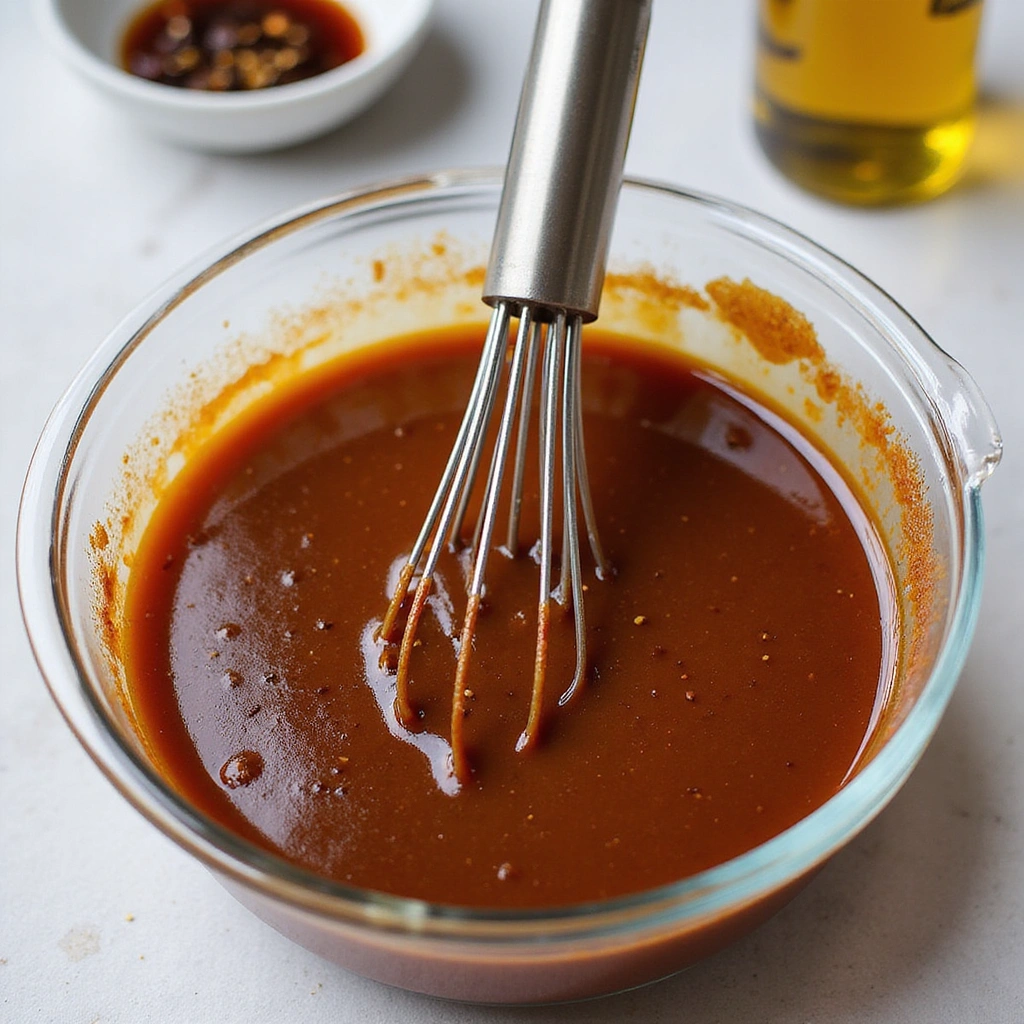
In a medium bowl, combine the soy sauce, sesame oil, rice vinegar, and cornstarch.
Whisk until the mixture is smooth and the cornstarch is fully dissolved.
This step ensures an even distribution of flavors in the final dish.
Set the sauce aside while you heat the wok.
Step 3: Heat the Wok

Place your wok on the stove over high heat.
Allow it to heat up until it’s very hot, which is key for stir frying.
You can test the heat by adding a few drops of water; they should sizzle and evaporate immediately.
This high temperature helps to achieve that signature sear on the vegetables.
Step 4: Add Oil

Once the wok is hot, add a tablespoon of cooking oil and swirl it around to coat the surface.
Using oil with a high smoke point, like vegetable or peanut oil, is ideal for stir frying.
This layer of oil prevents sticking and helps achieve a crispy texture.
Make sure the oil is shimmering before proceeding.
Step 5: Stir Fry Aromatics

Add the minced garlic and grated ginger to the hot oil.
Stir quickly to avoid burning, allowing the aromatics to release their fragrance.
This step infuses the oil with flavor and sets the stage for the vegetables.
Cook for about 30 seconds until aromatic but not browned.
Step 6: Add Vegetables

Next, add the chopped vegetables to the wok in order of cooking time.
Start with broccoli, as it takes longer to cook, followed by bell pepper.
Stir continuously for 3-4 minutes until the vegetables are tender but still crisp.
The high heat should create a vibrant color and slight char.
Step 7: Pour in the Sauce

Once the vegetables are cooked, pour the prepared sauce over them in the wok.
Stir quickly to coat all the ingredients evenly with the sauce.
This is when the sauce begins to thicken and cling to the vegetables.
Cook for an additional 1-2 minutes until everything is heated through.
Step 8: Serve the Stir Fry
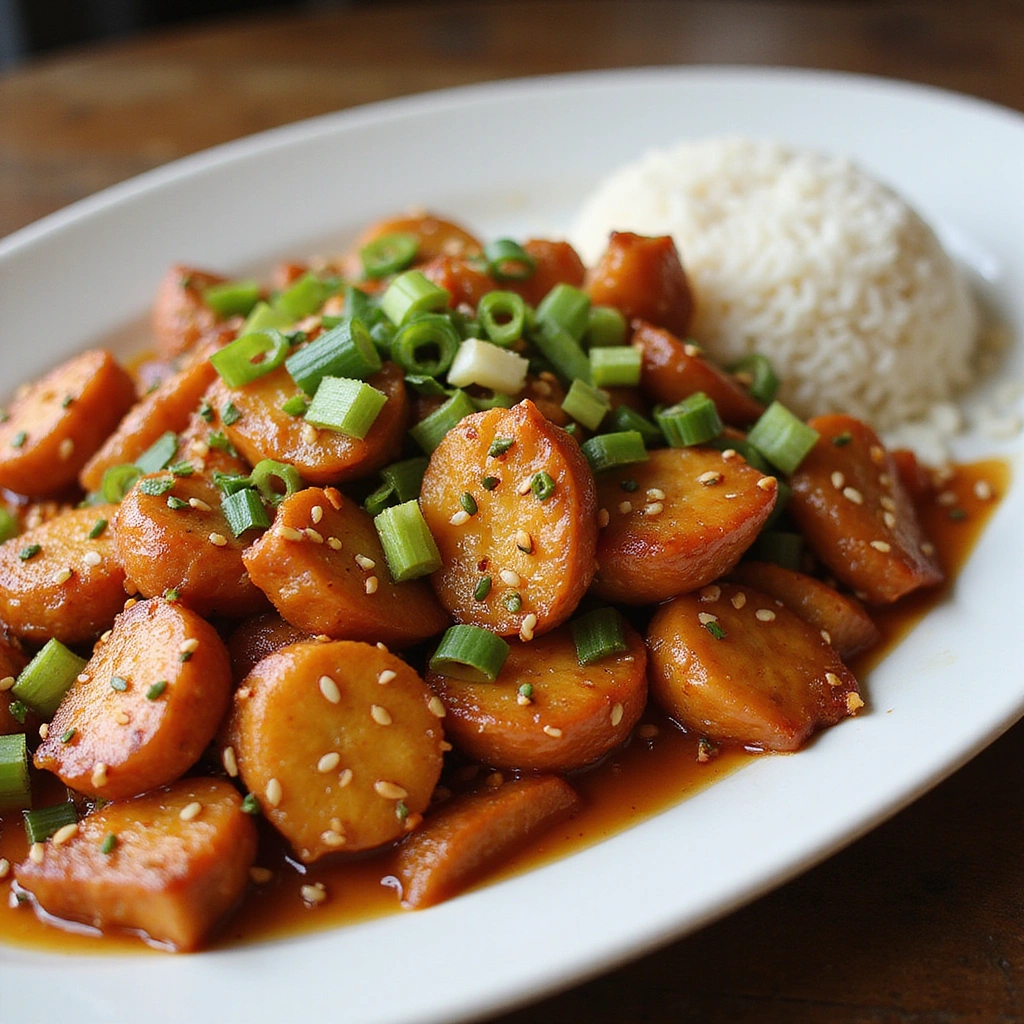
Remove the wok from heat and transfer the stir fry to a serving dish.
Garnish with sesame seeds or sliced green onions for extra flavor and presentation.
Serve immediately over steamed rice or noodles for a complete meal.
This dish is best enjoyed fresh to retain its vibrant colors and textures.
Critical Timing and Temperature Guide
Cooking Aromatics: Aromatics should be cooked for about 30 seconds to 1 minute over high heat. Look for them to become fragrant but not browned. Common mistakes include burning the garlic, which can impart a bitter taste.
Vegetable Cooking: Cook vegetables for 3-4 minutes, stirring constantly. They should be tender yet crisp. A common mistake is overcrowding the wok, which can lead to uneven cooking.
Thickening the Sauce: The sauce should thicken within 1-2 minutes of adding it to the vegetables. Look for a glossy finish that clings to the ingredients. Overcooking can lead to a gloopy texture.
Pro Tips for Chinese Stir Fry Sauce Recipes Essential For Home Cooking
• Ingredient Selection: Choose fresh, seasonal vegetables for the best flavor and texture. The quality of soy sauce also greatly impacts the final dish—look for low-sodium options for a healthier version.
• Preparation Secret: Pre-measure and prep all ingredients before cooking. Stir frying is a quick process, and having everything ready ensures you won’t overcook anything.
• Temperature Management: Ensure your wok is hot enough before adding ingredients. This prevents sticking and promotes a good sear on the vegetables.
• Texture Enhancement: Add vegetables in stages based on their cooking times. This ensures that everything is cooked perfectly without becoming mushy
.
• Flavor Layering: Consider adding a splash of oyster sauce or a pinch of sugar to elevate the flavors in your stir fry.
• Make-Ahead Strategies: The stir fry sauce can be made in advance and stored in the refrigerator for up to a week. Chop vegetables ahead of time and store them in airtight containers.
• Restaurant-Quality Finishing Touches: Drizzle a little more sesame oil or a sprinkle of toasted sesame seeds right before serving for added flavor and visual appeal.
• Equipment Optimization: If using a non-stick skillet, be cautious with high heat settings to avoid damaging the coating.
Troubleshooting Common Issues
• Vegetables Overcooked: This often occurs when ingredients are added all at once. To prevent this, add denser vegetables first, and stir fry in batches if necessary. Look for bright colors and a slight crunch as indicators of doneness.
• Sauce Too Thin: If your sauce doesn’t thicken, it may not have enough cornstarch or wasn’t cooked long enough. To remedy this, mix a little more cornstarch with water and add it back to the wok, cooking until thickened.
• Flavors Too Salty: If the dish is overly salty, balance it with a touch of sugar or vinegar to counteract the saltiness. Serve with a side of rice to mitigate the flavor.
• Stir Fry Sticking to the Wok: Ensure your wok is properly heated and oiled before adding ingredients. If it sticks, it could be a sign of insufficient oil or heat.
• Flavor Unbalanced: If the flavors are off, adjust with additional soy sauce, vinegar, or sugar to balance the dish. Taste as you go to find the right harmony.
Variations and Regional Differences
• Szechuan Style: This version incorporates bold flavors with the addition of Szechuan peppercorns and chili paste, providing a spicy kick. It often features ingredients like bell peppers and carrots, emphasizing heat and aroma.
• Cantonese Style: Known for its subtle flavors, this variation uses light soy sauce and often includes seafood like shrimp or scallops. Fresh vegetables are lightly cooked to retain their crispness.
• Vegetarian Version: Replace meat with tofu or tempeh, marinated in soy sauce before cooking. This variation highlights seasonal vegetables and can be enhanced with a variety of spices.
• Modern Interpretations: Contemporary adaptations might include gluten-free soy sauce or the use of quinoa instead of rice, catering to current dietary trends while maintaining the essence of the dish.
Food Science Behind the Recipe
• Maillard Reaction: This chemical reaction occurs when proteins and sugars are heated, creating complex flavors and appealing colors. Understanding this helps in achieving that perfect sear on vegetables and proteins in stir frying.
• Emulsification: When combining oil and water-based ingredients, emulsification occurs to create a uniform sauce. This is crucial for the sauce to cling to the stir-fried ingredients.
• Starch Gelatinization: Cornstarch thickens the sauce through gelatinization, where starch granules absorb water and swell when heated. This gives the sauce a desirable thickness and mouthfeel.
Frequently Asked Questions
What’s the most common mistake people make when preparing stir fry? Many home cooks underestimate the importance of high heat, leading to soggy vegetables. Always preheat your wok and ensure it’s hot before adding ingredients.
Can I prepare components of this dish in advance? Yes, you can chop vegetables and prepare the sauce ahead of time. Store them in airtight containers in the refrigerator for up to 3 days.
How do I adapt this recipe for dietary restrictions? For gluten-free options, use tamari instead of soy sauce. For a low-carb version, you can substitute rice with cauliflower rice.
What’s the best way to store and reheat leftovers? Store leftovers in an airtight container in the fridge for up to 3 days. Reheat in a skillet over medium heat until heated through, adding a splash of water to maintain moisture.
Can I freeze this dish? Yes, you can freeze the stir fry without the sauce. Store it in a freezer-safe container for up to 2 months. Thaw in the fridge overnight before reheating.
What wine or beverages pair best with this dish? A light, crisp white wine like Sauvignon Blanc complements the flavors well, as does a refreshing iced tea.
How can I scale this recipe up for a crowd? To scale the recipe, simply multiply the ingredient amounts while maintaining the ratios. Ensure your wok or skillet is large enough to accommodate the increased volume.
What side dishes complement this recipe best? Steamed rice or noodles pair excellently, as do simple side salads or spring rolls that add freshness to the meal.
How do professional chefs elevate this dish for restaurant service? Chefs often use premium ingredients and add finishing touches like microgreens or edible flowers for presentation.
Serving and Presentation Guide
• Traditional Presentation: Serve the stir fry in a large bowl or on a platter, garnished with sesame seeds and sliced green onions. This communal style encourages sharing and enhances the dining experience.
• Modern Plating Ideas: For a modern touch, plate individual servings in shallow bowls, drizzling the sauce artistically around the edge for visual appeal.
• Accompaniment Suggestions: Serve with jasmine rice or egg noodles, and consider offering soy sauce or chili oil on the side for added flavor.
• Special Occasion Presentation: For special occasions, consider using a decorative serving dish and adding a sprig of fresh herbs or edible flowers for an elegant touch.
Conclusion
Mastering Chinese stir fry sauce recipes can transform your home cooking into a delightful culinary experience.
With the right techniques and ingredients, you can bring the authentic flavors of Chinese cuisine into your kitchen.
I encourage you to try these recipes and make them your own, exploring different combinations and flavors.
Happy cooking and enjoy every delicious bite!

